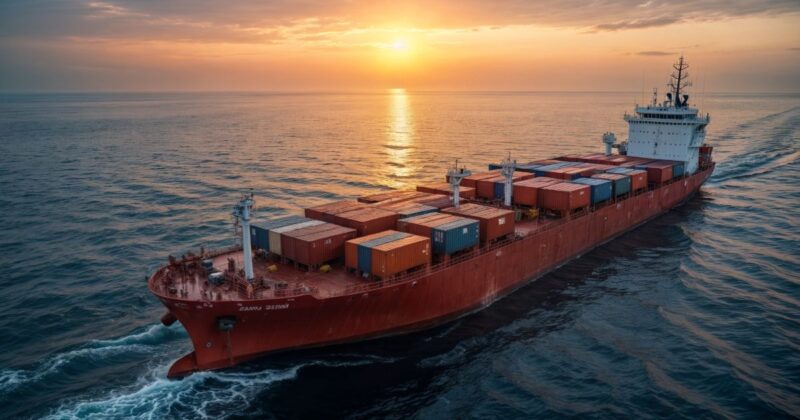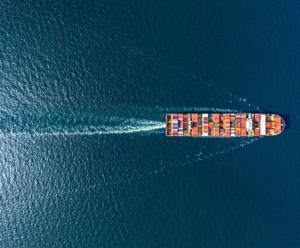
Ocean shipping’s news downpour

When it rains, it pours. In the early days of March, the description is perfectly apt for container shipping, and especially for those active in U.S. markets.
In just the first week of March, the Trump administration introduced an array of tariffs against imports from its three main trading partners—China, Canada, and Mexico—yet withdrew or postponed most of them just a few days later. President Donald Trump has insisted that most tariffs against Canada and Mexico will now be enforced from 2 April, although this seemingly depends on the outcome of ongoing negotiations with both countries.
The uncertainty is causing chaos across the highly integrated supply chain networks of North America, and for imports arriving to the U.S. from overseas via Canadian and Mexico gateways.
Meanwhile, China and Canada have introduced their own tariffs against U.S. exports. 2 April is also the promised start date of Trump's reciprocal tariff rollout. What this means globally is very unclear at this stage, but the threat is that new tariffs will be imposed on a country-by-country basis and on specific sectors to reflect "tariffs and non-tariff measures imposed on the U.S.", says the administration.
In the meantime, radical plans to change U.S. de minimis rules by eliminating exemptions on imports from China appear to be some time off enforcement. The rule change announced at the start of February was quickly shelved when it became clear the U.S. did not have the resources and systems in place to manage the new regime, leaving millions of parcels stranded.
Customs and Border Protection (CBP) and other agencies have been asked to provide solutions by the start of April, but most analysts now expect any new regime to not be ready for many months.
The fog of uncertainty around tariffs has caused concern across global supply chains and also prompted stock markets to correct as investor confidence has been hit.
"The rapid pace of policy changes is creating significant challenges for logistics planning across the Asia-Pacific region and far beyond, forcing companies to constantly revise their forecasts and routing strategies," said Niki Frank, CEO, DHL Global Forwarding Asia Pacific. "We're seeing clients adopt much more flexible supply chain models with multiple contingency options, and we are supporting clients with multimodal solutions where we can navigate this unpredictable environment."
Shipping and politics
The increasingly entwined nature of shipping and politics was also apparent in the latest mega deals. President Trump has repeatedly criticized Panama for allowing Chinese companies to invest freely around the Panama Canal, prompting the country to withdraw from China's Belt and Road Initiative in February. The multi-billion deal that saw CK Hutchison sell its 80 percent stake in Hutchison Ports Holding to a consortium made up of Mediterranean Shipping Co (MSC)'s port operator Terminal Investment Ltd (TiL) and hedge fund giant BlackRock was, therefore, greeted in Washington as another political win. The deal covered Hutchison's non-China terminals, amounting to 43 ports in 23 countries.
Critically, this included the sale of Hutchison Port Holdings' 90 percent interest in Panama Ports Company, which operates the Balboa and Cristobal ports on opposite ends of the Panama Canal.
For many in shipping, however, the deal was viewed as a major feather in the cap for MSC, which overnight became the largest terminal operator in the world. As reported by The Freight Buyers Club, because MSC now has control of major hub ports around the world, it has every opportunity to optimize operations as the largest container shipping company in the world seeks to compete against alliances of its rivals while going it alone.
One clear win for the Trump administration's efforts to bolster U.S. control of shipping and rebuild its shipping sector came from French carrier CMA CGM. After chief executive Rodolphe Saadé met President Trump at the White House in the first week of March, the carrier pledged to invest US$20 billion (€18.5 billion) in U.S. logistics over the next four years, including tripling the size of the container line's U.S.-flagged fleet and upgrading its U.S. port facilities.
Congestion concerns, but demand growth predicted
Amid the uncertainty, spot rates have declined, and the outlook is, at best, turbulent. However, demand growth will still be on the cards in 2025, according to DHL's March Ocean Freight Market Update. This notes that long-term global container trade is expected to grow by 3.6 percent on average per annum from 2024 to 2028.
With no sign of a return to regular container shipping operations via the Suez Canal, the major bottleneck around the world remains port congestion, currently holding up ships in key European and Chinese ports and tying up some 2.65m TEU of capacity, which translates to just over 8 percent of total global container shipping capacity at ports.
The March update warned that worsening port congestion in Europe was straining capacity and could disrupt the schedules of ships returning to Asia in the next two months, which could reduce the capacity available in April.
"While we're seeing an overlay of geopolitical tensions affecting shipping planning, port congestion remains a major bottleneck on an operational level," said Praveen Gregory, Senior Vice President, Ocean Freight, DHL Global Forwarding Asia Pacific. "Our current focus is helping clients navigate these bottlenecks and plan ahead as we assess the variety of risks supply chains face in 2025.”
ALSO WORTH READING












 English
English